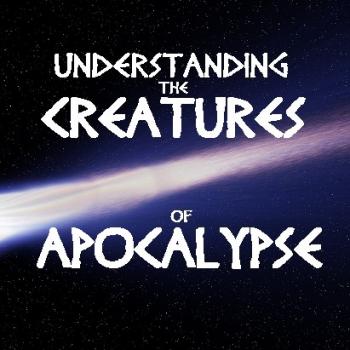
Fixing spurious familiarity about Paul and his letter-writing results in understanding 1 Corinthians 8:1-13.
Recently we revisited henotheism found throughout the Hebrew Scriptures. After that, we covered how monotheism, surprisingly rare in the Bible, slowly developed. At the risk of beating a dead horse, once again I will reiterate that as a Catholic Christian, I am a Trinitarian monotheist. I believe in the Trinity of God and the humanity of Christ. What I reject is the currently popular, nonscholarly fundamentalist Catholic “connect-the-dots” proof-texting abuse of Scripture.
Eventually, I will be addressing the wonderfully written piece by our brother Dr. EDWIN WOODRUFF TAIT, “God and the gods: will the real monotheism stand up?” Doctor Tait is a generous and respectful author, musician, fellow lover of Middle Earth, and a contributing editor for Christian History Magazine. If you haven’t already, go check out “Light in the West.” Good stuff from a decent brother.
This post and its immediate followup, however, won’t primarily be about henotheism vs monotheism and when the latter actually arrived on the stage of history. Rather, they delve into the context of 1 Corinthians 8:4-6. What is Paul really talking about here? This post specifically gets to fixing a lot of wrong ideas people have about Paul and his writings.
Fixing Erroneous Bible Quoting
You know the way so many of us Christians quote Scripture and Church Fathers betrays us as thoroughly inconsiderate readers. This is because we obviously demand that the ancient Scriptures and Patristics are perennially contemporary—always immediately relevant to the present situation no matter the age. We don’t seem to care that the biblical authors and Patristic writers consistently refer to situations and models of the world alien to 21st century Western experience.
Consequently, the vast majority of contemporary Christian Bible-quoters must be inconsiderate readers, ethnocentrically anachronistic in highly sophisticated ways. This is because we don’t even try to reconstruct the social world of the Bible.
But who cares about fixing this? Because to us lazy, inconsiderate Scripture-quoters, doing the heavy lifting is irrelevant. “Inspired” means magical to us. Just open up the magical book and voila!—magical understanding is immediately yours!
And the consequences? They are devastating. For instance, those we influence receive a terrible disservice as the ignorance pools and nonunderstanding multiplies. Forsaking the domains of reference derived from and appropriate to the social world of the Bible, how can anything else be the result? So, without a culturally appropriate model for reading the Bible (i.e., a respectful reading), forget about interpreting it and understanding it.
Fixing Spurious Familiarity with Paul
This helps us to understand what I’ve mentioned in numerous posts—contemporary Christians tend to be spuriously familiar about Paul. Even scholars fall prey to spuriously familiar ideas about him. But why worry about that? Who cares? My own identity theft of Paul is far more important than the irrelevant historical figure! So let’s just go on quoting him assuming in arrogance that I really understand what I am quoting! Like here—
1 Corinthians 8:4-6
So about the eating of meat sacrificed to idols: we know that “there is no idol in the world,” and that “there is no God but one.” Indeed, even though there are so-called gods in heaven and on earth (there are, to be sure, many “gods” and many “lords”), yet for us there is one God, the Father, from whom all things are and for whom we exist, and one Lord, Jesus Christ, through whom all things are and through whom we exist.
Before we even start (mis)interpreting the passage, our NABRE translators have already messed things up, bigtime. Fixing this takes hard work. We will see why in our followup post.
We need to dive into the context of this passage, right? But to do that, we first need to be more honest with Paul. Therefore, to do that, we must roll out some very important questions. These would be: How many letters did he write? When did he write them? Why did he write them? And to whom were they written? Our spurious familiarity jams up and prevents us from really understanding with a plethora of erroneous assumptions.
Fixing Faulty Images of Paul
“Paul is a Jewish Christian with a ministry to Gentiles, right?” So sorry, but that popular notion is 100 percent incorrect. In contrast to spurious assumptions, Paul is an Israelite apostle (i.e., a change agent authorized by God) to communicate a homophilous innovation (“the Gospel of God”) to fellow Israelite emigres living among non-Israelites in the Mediterranean. Look here:
Scholars unanimously agree that of the fourteen New Testament documents attributed to Paul, he only really wrote (and sometimes co-wrote) seven. “Philemon” is a letter of recommendation to a master of the same name, urging him to accept back his runaway slave named Onesimus. “Romans,” fancifully imagined to be this ingenious theological big deal, is really just a letter of Mediterranean-styled travel arrangements addressed to a Jesus group Paul has never visited before.
“1 Thessalonians”, “Galatians,” “Philippians,” “1 Corinthians,” and “2 Corinthians” are all letters addressing interpersonal problems experienced by various Jesus groups founded by Paul. These five “change agent letters” present information exchange between Paul and his clients, members of the Jesus groups he founded.
Understanding 1 Corinthians
Going by the Context Group and other biblical scholars, the document called “1 Corinthians” was probably written at Ephesus and sent to Corinth sometime between 53 and 56 CE, likely not later than October, 54. Although we call this letter “FIRST Corinthians,” there was, in fact, an earlier letter now lost to us (see 1 Corinthians 5:9)—so don’t get too caught up on the titles these documents were much later given (“Romans” wasn’t really written to Romans!).
The letter-carrier Timothy, once he visited Corinth, reported back to Paul about the Corinthian messianists’ reaction to this earlier letter. Timothy highlighted the arrogance of some within the Jesus group there (1 Corinthians 4:17). Following Timothy’s report, Chloe’s people (slaves? 1 Corinthians 1:11) also filled Paul in when they visited him. Chloe’s people reported to Paul reactions to Paul’s innovations that transpired back in Corinth. Finally, some other Jesus group members sent Paul a letter of their own spelling out their issues and concerns (1 Corinthians 7:1).
So what then is the document called “FIRST Corinthians”? Basically, it is a letter of Paul responding to all this previous information he has received—that derived from Timothy’s trip, from Chloe’s people, and the other letter.
Fixing Disrespectful Scripture-Quoting
Folks, whenever you drop a quotation from the Scriptures, please don’t rip it bleeding out of context. That’s hardly respectful of Jesus and the Holy Spirit. Please remember that the Spirit worked IN the human author and his messy circumstances. Wisdom says that a proof-text without context is a pretext. Why would you ever quote from a document when you don’t have a clue about it? Can you tell me when was it composed? Why was it written? To whom was written? And there is a whole lot more we need to know as well before we go around quoting it!
Fixing that means axing sentimental practices like giving people Bible quotes as emotional fluff. At least strive to answer the questions above, and if you absolutely must quote the Bible, please do so respectfully.
Changing the Innovation in 1 Corinthians
Paul’s Israelite clients at Corinth who had accepted his innovation (“the Gospel of God”) were reinventing it, or modifying it. In other words, Corinthian Jesus group members were departing somewhat from Paul’s original innovation about the God of Israel acting in Jesus of Nazareth. Scholars call this change “refraction.” In fact, whenever any innovation about anything is introduced anywhere, inevitably changes occur because new situations and settings that arise always impact matters. Sorry “evangelists,” but the great Thanos of your efforts will always be refraction.
Therefore, no Gospel, even Paul’s, remains pure. This is because whenever groups adopt innovations, adaptions always occur. Why? Because people simply must modify things. That’s life! People always have specific situations that differ from others’. And therefore, whenever they adapt the innovations, the innovations inevitably become reinventions. This is because no one anywhere ever receives an innovation from someone 100 percent literally or exactly, with machine-like precision. And consequently, the problems going on between Paul and his Corinthian Israelite audience emerged from the latter’s modifications.
Whatever divine inspiration is, it cannot happen apart from this messiness. Our God must be a messy God, huh? The Holy Spirit is a messy Spirit! The letters of Paul demonstrate handsomely that as his innovation diffused throughout the Mediterranean, it could not remain unvaried. Fundamentalists go crazy over this human reality. They dare not give it too much thought, because, after all, the distance between fundamentalism and atheism is all too brief! Sadly for them, the beliefs and verbal orthodoxy they constantly obsess over are not necessarily faith. Life is tough on our ideas, huh?
Breakdown of 1 Corinthians
So, following scholars Bruce Malina and John Pilch, “1 Corinthians” is Paul addressing problems in the Hellenistic-Israelite Corinthian Jesus group. The letter was occasioned by his innovation and his audience’s subsequent refractions of it. After his letter opening (1 Corinthians 1:1-8), we read two sections that constitute Paul’s reaction to the report from Chloe’s people (1 Corinthians 1:9—6:20). Then there is a section where Paul answers various Corinthian questions (1 Corinthians 7:1—15:58).
These questions concern “marriage” (i.e., the complicated, socially-acceptable “taking of a woman” symbolizing the merger of two Israelite families) now (7:1-40). Then foods and dining (8:1—11:1), a section which interests us, containing the passage we are considering. Then Jesus group change agents and their entitlements (9:1-27). And then, showing respect for images (10:1—11:1). This is followed up with Paul addressing proper behavior at Jesus group gatherings (11:2-34). Then phenomena induced by altered states of consciousness experiences (12:1—15:40). Then Paul gives a reminder of his gospel and about the resurrection (15:1-58). And finally, Paul addresses questions about the Temple tax (16:1-4).
At last, we see the letter close with a final section where Paul talks about his travel plans, salutations, and final blessings (16:5-24).
Now, with that understood, we can focus in on 1 Corinthians 8:1-13 and see what is really going on. We will do precisely that in our very next post… RIGHT HERE.












